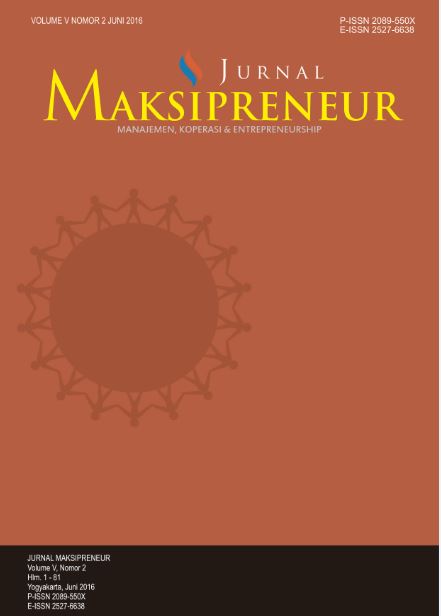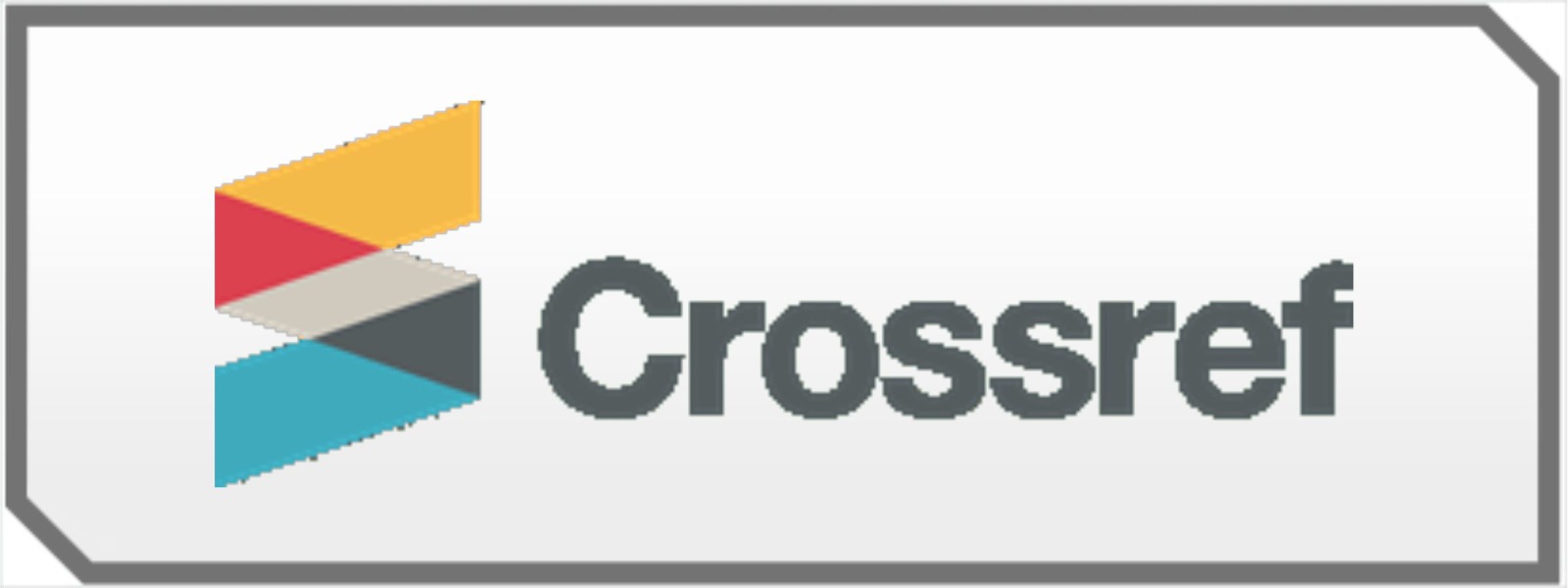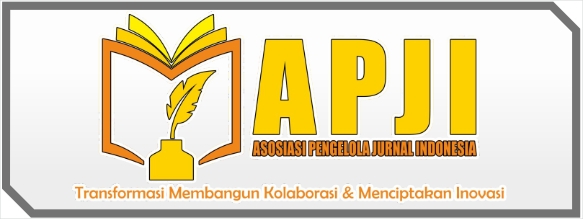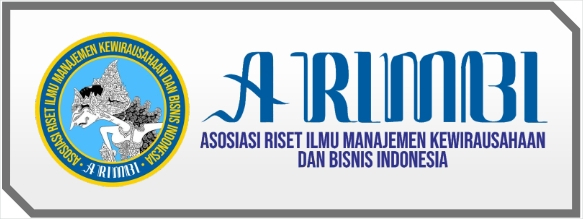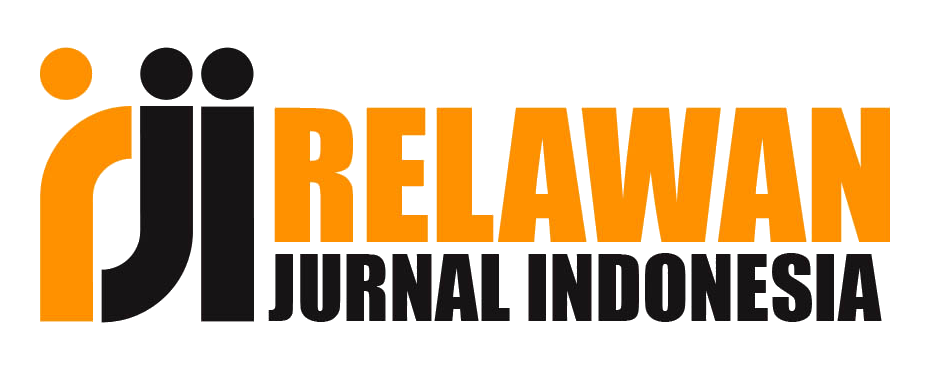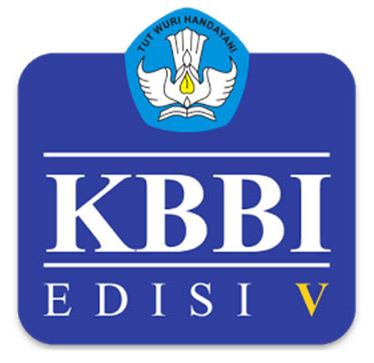Karakteristik Manajemen dan Kepemimpinan Transformasional sebagai Penentu Kreativitas Karyawan yang Dimediasi oleh Kepuasaan Kerja
DOI:
https://doi.org/10.30588/jmp.v12i2.1186Keywords:
Employee creativity, Employee job satisfaction, Management characteristic, Transformational leadershipAbstract
Many organizational top managers are increasingly aware of the importance of innovation as a precondition to maintaining sustainable organizational growth. Moreover, creativity is also often seen as the main driving force for innovation. The aim of this study is to analyze the effects of management characteristics represented by the dimensions of supervisor’s humility and abusive supervision, and transformational leadership on employee creativity mediated by employee job satisfaction. Utilizing a purposive sampling method, this study selected 260 back-office employees who work at banks in Indonesia and the online survey was administered during the period of June to July 2022. Employing PLS-SEM as an inferential analysis tool, this study found that a supervisor’s humility and transformational leadership have positive effects, whereas abusive supervision has a negative effect on employees’ job satisfaction. Furthermore, employee job satisfaction was also found to mediate the effects of supervisor’s humility, abusive supervision, and transformational leadership towards employee creativity.References
Akehurst, G., Comeche, J. M., & Galindo, M. A. (2009). Job satisfaction and commitment in the entrepreneurial SME. Small Business Economics, 32(3), 277–289. https://doi.org/10.1007/s11187-008-9116-z
Alonderiene, R., & Majauskaite, M. (2016). Leadership style and job satisfaction in higher education institutions. International Journal of Educational Management, 30(1), 140–164. https://doi.org/10.1108/IJEM-08-2014-0106
Amabile, T. M. (1983). The social psychology of creativity: A componential conceptualization. Journal of Personality and Social Psychology, 45(2), 357–376. https://doi.org/10.1037/0022-3514.45.2.357
Amabile, T. M. (1998). A model of creativity and innovation in organizations. In Research in Organizational Behavior (Vol. 10, pp. 123–167).
Angelina, F. (2018). Pengaruh Kepemimpinan Transformasional Terhadap Kinerja Karyawan Dengan Kepuasan Kerja Sebagai Variabel Intervening Di Hotel Zoom Jemursari Surabaya. Agora, 6(2), 1–7.
Aquino, K., Griffeth, R. W., Allen, D. G., & Hom, P. W. (1997). Integrating justice constructs into the turnover process: A test of a referent cognitions model. Academy of Management Journal, 40(5), 1208–1227. https://doi.org/10.2307/256933
Ashforth, B. E. (1997). Petty Tyranny in Organizations: A Preliminary Examination of Antecedents and Consequences. Canadian Journal of Administrative Sciences, 14(2), 126–140. https://doi.org/10.1111/j.1936-4490.1997.tb00124.x
Asif, M., Qing, M., Hwang, J., & Shi, H. (2019). Ethical leadership, affective commitment, work engagement, and creativity: Testing a multiple mediation approach. Sustainability (Switzerland), 11, 4489. https://doi.org/10.3390/su11164489
Avolio, B. J., Bass, B. M., & Jung, D. I. (1999). Re-examining the components of transformational and transactional leadership using the multifactor leadership questionnaire. Journal of Occupational and Organizational Psychology, 72(4), 441–462. https://doi.org/10.1348/096317999166789
Bai, Y., Lin, L., & Li, P. P. (2016). How to enable employee creativity in a team context: A cross-level mediating process of transformational leadership. Journal of Business Research, 69(9), 3240–3250. https://doi.org/10.1016/j.jbusres.2016.02.025
Bass, B. M., & Avolio, B. J. (1994). Improving organizational effectiveness through transformational leadership. Sage Publications, Inc.
Bass, B. M., & Avolio, B. J. (1995). MLQ multifactor leadership questionnaire. Redwood City. CA: Mind Garden.
Bies, R. J., & Tripp, T. M. (1998). Revenge in Organizations: The Good, the Bad, and the Ugly. In Dysfunctional behavior in organizations: Violent and deviant behavior. (pp. 49–67). Elsevier Science/JAI Press.
Braun, S., Peus, C., Weisweiler, S., & Frey, D. (2013). Transformational leadership, job satisfaction, and team performance: A multilevel mediation model of trust. Leadership Quarterly, 24(1), 270–283. https://doi.org/10.1016/j.leaqua.2012.11.006
Bukit, B., Malusa, T., & Rahmat, A. (2017). Pengembangan Sumber Daya Manusia. Teori, Dimensi Pengukuran, dan Implementasi dalam Organisasi. Zahir Publishing.
Cahyono, H. (2019). Pengaruh Gaya Kepemimpinan Transformasional Dan Motivasi Kerja Terhadap Kinerja Karyawan Dengan Kepuasan Kerja Sebagai Variabel Mediasi Di RSUD Dr Saiful Anwar. Magister Manajemen, 1–90.
Christie, B. C. (2019). Humility, Trust, And Satisfaction Examining The Salesperson/Sales Manager Relationship. Baylor University.
Cummings, A., & Oldham, G. R. (1997). Enhancing Creativity: Managing Work Contexts for the High Potential Employee. California Management Review, 40(1), 22–38. https://doi.org/10.2307/41165920
Davis, K., & Nestrom, J. . (1985). Human Behavior at Work: Organizational Behavior. New York, NY, 109.
Elkins, T., & Keller, R. T. (2003). Leadership in research and development organizations: A literature review and conceptual framework. Leadership Quarterly, 14(4–5), 587–606. https://doi.org/10.1016/S1048-9843(03)00053-5
Epstein, M. J., & Roy, M. J. (2001). Sustainability in action: Identifying and measuring the key performance drivers. Long Range Planning, 34(5), 585–604. https://doi.org/10.1016/S0024-6301(01)00084-X
Farmer, S. M., Tierney, P., & Kung-Mcintyre, K. (2003). Employee creativity in Taiwan: An application of role identity theory. Academy of Management Journal, 46(5), 618–630. https://doi.org/10.2307/30040653
Fikri, M. A. A., Asbari, M., Hutagalung, D., Amri, L. H. A., & Novitasari, D. (2021). Quo Vadis Motivasi Intrinsik Pegawai: Peran Strategis Kepemimpinan Transformasional dan Kepuasan Kerja. Edukatif : Jurnal Ilmu Pendidikan, 3(6), 4025–4040. https://doi.org/10.31004/edukatif.v3i6.1397
Fornell, C., & Larcker, D. (1981). Evaluating Structural Equation Models with Unobservable Variables and Measurement Error. Journal of Marketing Research, XVIII(February), 39–50.
Fullan, M. (2002). Principals as Leaders in a Culture of Change. Educational Leadership, 59, 16–21.
Ganesan, S., & Weitz, B. A. (1996). The impact of staffing policies on retail buyer job attitudes and behaviors. Journal of Retailing, 72(1), 31–56. https://doi.org/https://doi.org/10.1016/S0022-4359(96)90004-4
Ghozali, I., & Latan, H. (2015). Partial least squares Konsep, teknik, dan aplikasi menggunakan program SmartPLS 3.0 : Untuk Penelitian Empiris (2nd ed.). Badan Penerbit UNDIP.
Glisson, C., & Durick, M. (1988). Predictors of Job Satisfaction and Organizational Commitment in Human Service Organizations. Administrative Science Quarterly, 33(1), 61–81. https://doi.org/10.2307/2392855
Hair, J. F., Black, W. C., Babin, B. J., & Anderson, R. E. (2018). Multivariate Data Analysis (8th ed.). Cengage.
Hardono, S. A., & Setiawan, R. (2021). Pengaruh Transformational Leadership Terhadap Employee Creativity Melalui Knowledge Sharing Dan Intrinsic Motivation Pada Stasiun Pengisian Dan Pengangkutan Bulk Elpiji Kabupaten Pasuruan. Agora, 9(2), 1–14.
Herzberg, F., Bernard, M., & Snyderman, B. (1959). The Motivation to Work. In Wiley: New York, NY, USA.
Hirschfeld, R. R. (2000). Does revise the intrinsic and extrinsic subscales of the Minnesota satisfaction questionnaire short form make a difference? Educational and Psychological Measurement, 60(2), 255–270. https://doi.org/10.1177/00131640021970493
Hogan, R., & Kaiser, R. B. (2005). What we know about leadership. Review of General Psychology, 9(2), 169–180. https://doi.org/10.1037/1089-2680.9.2.169
Hollenbeck, J. R. (1989). Control Theory and the Perception of Work Environments: The Effects of Focus of Attention on. Organizational Behavior and Human Decision Processes, 43(3), 406–430.
Howell, J. M., & Hall-Merenda, K. E. (1999). The ties that bind: The impact of leader-member exchange, transformational and transactional leadership, and distance on predicting follower performance. Journal of Applied Psychology, 84(5), 680–694. https://doi.org/10.1037/0021-9010.84.5.680
Hu, L. T., & Bentler, P. M. (1999). Cutoff criteria for fit indexes in covariance structure analysis: Conventional criteria versus new alternatives. Structural Equation Modeling, 6(1), 1–55. https://doi.org/10.1080/10705519909540118
Indrasari, M. (2017). Kepuasan Kerja dan Kinerja Karyawan. Indomedia Pustaka.
Isen, A. M., Shalker, T. E., Clark, M., & Karp, L. (1978). Affect, accessibility of material in memory, and behavior: A cognitive loop? Journal of Personality and Social Psychology, 36(1), 1–12. https://doi.org/10.1037/0022-3514.36.1.1
Iswandi, A. (2021). Analisis Pengelolaan Manajemen Sumber Daya Manusia ( Sdm ) Dalam Upaya Meningkatkan Kinerja Dan Motivasi Melalui Reward System ( Artikel Studi Manajemen Sumber Daya Manusia ). JIHHP Jurnal Ilmu Hukum Humaniora Dan Politik, 1(3), 280–288.
Jaussi, K. S., & Dionne, S. D. (2003). Leading for creativity: The role of unconventional leader behavior. Leadership Quarterly, 14(4–5), 475–498. https://doi.org/10.1016/S1048-9843(03)00048-1
Jiang, W., Gu, Q., & Wang, G. G. (2014). To Guide or to Divide: The Dual-Side Effects of Transformational Leadership on Team Innovation. Journal of Business and Psychology, 30(4), 677–691. https://doi.org/10.1007/s10869-014-9395-0
Judge, T. A., & Piccol, R. F. (2004). Transformational and transactional leadership: A meta-analytic test of their relative validity. Journal of Applied Psychology, 89(5), 755–768. https://doi.org/10.1037/0021-9010.89.5.755
Judge, T. A., Piccolo, R. F., & Ilies, R. (2004). The Forgotten Ones? The Validity of Consideration and Initiating Structure in Leadership Research. Journal of Applied Psychology, 89(1), 36–51. https://doi.org/10.1037/0021-9010.89.1.36
Kalleberg, A. L. (1977). Work Values and Job Rewards: A Theory of Job Satisfaction. American Sociological Review, 42(1), 124–143. https://doi.org/10.1190/segam2013-0137.1
Kark, R., Van Dijk, D., & Vashdi, D. R. (2018). Motivated or Demotivated to Be Creative: The Role of Self-Regulatory Focus in Transformational and Transactional Leadership Processes. Applied Psychology, 67(1), 186–224. https://doi.org/10.1111/apps.12122
Kasımoğlu, M., & Ammari, D. (2020). Transformational leadership and employee creativity across cultures. Journal of Management Development, 39(4), 475–498. https://doi.org/10.1108/JMD-05-2019-0153
Keashly, L., Trott, V., & MacLean, L. M. (1994). Abusive behavior in the workplace: A preliminary investigation. Violence and Victims, 9(4), 341–357. https://doi.org/10.1891/0886-6708.9.4.341
Khalili, A. (2016). Linking transformational leadership, creativity, innovation, and innovation-supportive climate. Management Decision, 54(9), 1–25.
Kock, N. (2015). Common Method Bias in PLS-SEM. International Journal of E-Collaboration, 11(4), 1–10. https://doi.org/10.4018/ijec.2015100101
Lee, J., Kim, S., Lee, J., & Moon, S. (2019). Enhancing employee creativity for a sustainable competitive advantage through perceived human resource management practices and trust in management. Sustainability (Switzerland), 11(8). https://doi.org/10.3390/su11082305
Lee, S., Yun, S., & Srivastava, A. (2013). Evidence for a curvilinear relationship between abusive supervision and creativity in South Korea. Leadership Quarterly, 24(5), 724–731. https://doi.org/10.1016/j.leaqua.2013.07.002
Locke, E A. (1976). The nature and causes of job satisfaction. Handbook of Industrial and Organizational Psychology, 1297–1349.
Locke, Edwin A. (1969). What is job satisfaction? Organizational Behavior and Human Performance, 4(4), 309–336. https://doi.org/10.1016/0030-5073(69)90013-0
Lowe, K. B., Kroeck, K. G., & Nagaraj Sivasubramaniam. (1996). Effectiveness Correlates of Transformational and Transactional Leadership: A Meta-Analytic Review of The MLQ Literatur. Leadership Quarterly, 7(3), 385-425. https://doi.org/10.1159/000149892
MacCallum, R. (1986). Specification searches in covariance structure modeling. Psychological Bulletin, 100(1), 107–120. https://doi.org/10.1037//0033-2909.100.1.107
Meyerding, S. G. H. (2019). Job satisfaction and preferences regarding job characteristics of young professionals in German horticulture. Acta Horticulturae, 1242, 593–600. https://doi.org/10.17660/ActaHortic.2019.1242.87
Miao, S., Komil ugli Fayzullaev, A., & Dedahanov, A. T. (2020). Management Characteristics as Determinants of Employee Creativity: The Mediating Role of Employee Job Satisfaction. Sustainability, 12(5), 1948. https://doi.org/10.3390/su12051948
Mickson, M. K., & Anlesinya, A. (2019). Enhancing job satisfaction among local government servants in Ghana. International Journal of Public Leadership, 16(1), 1–16. https://doi.org/10.1108/ijpl-03-2019-0007
Morris, J. A., Brotheridge, C. M., & Urbanski, J. C. (2005). Bringing humility to leadership: Antecedents and consequences of leader humility. Human Relations, 58(10), 1323–1350. https://doi.org/10.1177/0018726705059929
Morris, M. G., & Venkatesh, V. (2010). Job Characteristics and Job Satisfaction: Understanding the Role of Enterprise Resource Planning System Implementation. Management Information Systems Research Center, 34(1), 143–161.
Nerkar, A. A., McGrath, R. G., & Macmillan, I. C. (1996). Three facets of satisfaction and their influence on the performance of innovation teams. Journal of Business Venturing, 11(3), 167–188. https://doi.org/10.1016/0883-9026(96)00002-X
Ng, T. W. H. (2017). Transformational leadership and performance outcomes: Analyses of multiple mediation pathways. Leadership Quarterly, 28(3), 385–417. https://doi.org/10.1016/j.leaqua.2016.11.008
Oishi, S., Diener, E. F., Lucas, R. E., & Suh, E. M. (1999). Cross-cultural variations in predictors of life satisfaction: Perspectives from needs and values. Personality and Social Psychology Bulletin, 25(8), 980–990. https://doi.org/10.1177/01461672992511006
Owens, B. P., & Hekman, D. R. (2012). Modeling how to grow: An inductive examination of humble leader behaviors, contingencies, and outcomes. Academy of Management Journal, 55(4), 787–818. https://doi.org/10.5465/amj.2010.0441
Owens, B. P., Johnson, M. D., & Mitchell, T. R. (2013). Expressed humility in organizations: Implications for performance, teams, and leadership. Organization Science, 24(5), 1517–1538. https://doi.org/10.1287/orsc.1120.0795
Podsakoff, P. M., MacKenzie, S. B., Lee, J. Y., & Podsakoff, N. P. (2003). Common Method Biases in Behavioral Research: A Critical Review of the Literature and Recommended Remedies. Journal of Applied Psychology, 88(5), 879–903. https://doi.org/10.1037/0021-9010.88.5.879
Priyono, P., & Marnis, M. (2008). Manajemen Sumber Daya Manusia. Zifatama Publisher.
Richman, J. A., Flaherty, J. A., Rospenda, K. M., & Christensen, M. L. (1992). Mental Health Consequences and Correlates of Reported Medical Student Abuse. JAMA: The Journal of the American Medical Association, 267(5), 692–694. https://doi.org/10.1001/jama.1992.03480050096032
Rubin, R. S., Munz, D. C., & Bommer, W. H. (2005). Leading from within the effects of emotion recognition and personality on transformational leadership behavior. Academy of Management Journal, 48(5), 845–858. https://doi.org/10.5465/AMJ.2005.18803926
Sacramento, C. A., Fay, D., & West, M. A. (2013). Workplace duties or opportunities? Challenge stressors, regulatory focus, and creativity. Organizational Behavior and Human Decision Processes, 121(2), 141–157. https://doi.org/10.1016/j.obhdp.2013.01.008
Salinero, S. F., Abal, Y. N., & Topa, G. (2019). On the relationship between perceived conflict and interactional justice influenced by job satisfaction and group identity. Sustainability (Switzerland), 11(24), 1–11. https://doi.org/10.3390/su11247195
Shafi, M., Zoya, Lei, Z., Song, X., & Sarker, M. N. I. (2020). The effects of transformational leadership on employee creativity: The moderating role of intrinsic motivation. Asia Pacific Management Review, 25(3), 166–176. https://doi.org/10.1016/j.apmrv.2019.12.002
Sheehan, K. H., Sheehan, D. V., White, K., Leibowitz, A., & Baldwin, D. C. (1990). A Pilot Study of Medical Student ‘Abuse’: Student Perceptions of Mistreatment and Misconduct in Medical School. JAMA: The Journal of the American Medical Association, 263(4), 533–537. https://doi.org/10.1001/jama.1990.03440040072031
Shim, & O’Brien, M. (2002). A hierarchical model of values, leadership, job satisfaction, and commitment: Human resources management implications for the retail industry. Journal of Marketing Channels, 10(1), 65–87. https://doi.org/10.1300/J049v10n01_05
Shin, S. J., & Zhou, J. (2003). Transformational leadership, conservation, and creativity: Evidence from Korea. Academy of Management Journal, 46(6), 703–714. https://doi.org/10.2307/30040662
Shipton, H. J., West, M. A., Parkes, C. L., Dawson, J. F., & Patterson, M. G. (2006). When promoting positive feelings pays aggregate job satisfaction, work design features, and innovation in manufacturing organizations. European Journal of Work and Organizational Psychology, 15(4), 404–430. https://doi.org/10.1080/13594320600908153
Skansi, D. (2000). Relation Of Managerial Efficiency And Leadership Styles – Empirical Study In Hrvatska Elektroprivreda D.D. Management, 5, 51–67.
Sofyan, J. F., Putri, R. A., & Purnama, S. (2022). Karakteristik Manajemen Sebagai Determinan Kreativitas Karyawan yang di Mediasi Kepuasan Kerja Karyawan: Studi di Kementerian Kelautan dan Perikanan Jakarta. MBIA, 21(2), 184–199. https://doi.org/10.33557/mbia.v21i2.1909
Sokol, A., Gozdek, A., & Figurska, I. (2015). The Importance of Teacher Leadership in Shaping the Creative Attitudes of Students. Procedia - Social and Behavioral Sciences, 197, 1976–1982. https://doi.org/10.1016/j.sbspro.2015.07.569
Sosik, J. J., Avolio, B. J., & Kahai, S. S. (1997). Effects of leadership style and anonymity on group potency and effectiveness in a group decision support system environment. Journal of Applied Psychology, 82(1), 89–101. https://doi.org/10.1037/0021-9010.82.1.89
Spector, P. E. (1985). Measurement of human service staff satisfaction: Development of the Job Satisfaction Survey. American Journal of Community Psychology, 13(6), 693–713. https://doi.org/10.1007/BF00929796
Staw, B. M., Sutton, R. I., & Pelled, L. H. (1994). Employee Positive Emotion and Favorable Outcomes at the Workplace. Organization Science, 5(1), 51–71. https://doi.org/10.1287/orsc.5.1.51
Tangney, J. P. (2000). Humility: Theoretical perspectives, empirical findings and directions for future research. Journal of Social and Clinical Psychology, 19(1), 70–82. https://doi.org/10.1521/jscp.2000.19.1.70
Tepper, B. J. (2000). Consequences of abusive supervision. Academy of Management Journal, 43(2), 178–190. https://doi.org/10.2307/1556375
Tepper, B. J., Duffy, M. K., Hoobler, J., & Ensley, M. D. (2004). Moderators of the relationships between coworkers’ organizational citizenship behavior and fellow employees’ attitudes. Journal of Applied Psychology, 89(3), 455–465. https://doi.org/10.1037/0021-9010.89.3.455
Tierney, P., Farmer, S. M., & Graen, G. B. (1999). An examination of leadership and employee creativity: The relevance of traits and relationships. Personnel Psychology, 52(3), 591–620. https://doi.org/10.1111/j.1744-6570.1999.tb00173.x
Wang, J., Zhang, Z., & Jia, M. (2017). Understanding How Leader Humility Enhances Employee Creativity: The Roles of Perspective Taking and Cognitive Reappraisal. Journal of Applied Behavioral Science, 53(1), 5–31. https://doi.org/10.1177/0021886316678907
Wiliandari, Y. (2019). Kepuasan Kerja Karyawan. Society, 6(2), 81–95. https://doi.org/10.20414/society.v6i2.1475
Zellars, K. L., Tepper, B. J., & Duffy, M. K. (2002). Abusive supervision and subordinates’ organizational citizenship behavior. Journal of Applied Psychology, 87(6), 1068–1076. https://doi.org/10.1037/0021-9010.87.6.1068
Downloads
Published
How to Cite
Issue
Section
License
Authors who publish with Jurnal Maksipreneur agree to the following terms:
Authors retain copyright and grant the Jurnal Maksipreneur right of first publication with the work simultaneously licensed under a Creative Commons Attribution 4.0 International License that allows others to share (copy and redistribute the material in any medium or format) and adapt (remix, transform, and build upon the material) the work for any purpose, even commercially with an acknowledgment of the work's authorship and initial publication in Jurnal Maksipreneur.
Authors are able to enter into separate, additional contractual arrangements for the non-exclusive distribution of the journal's published version of the work (e.g., post it to an institutional repository or publish it in a book), with an acknowledgment of its initial publication in Jurnal Maksipreneur. Authors are permitted and encouraged to post their work online (e.g., in institutional repositories or on their website) prior to and during the submission process, as it can lead to productive exchanges, as well as earlier and greater citation of published work (See The Effect of Open Access).


